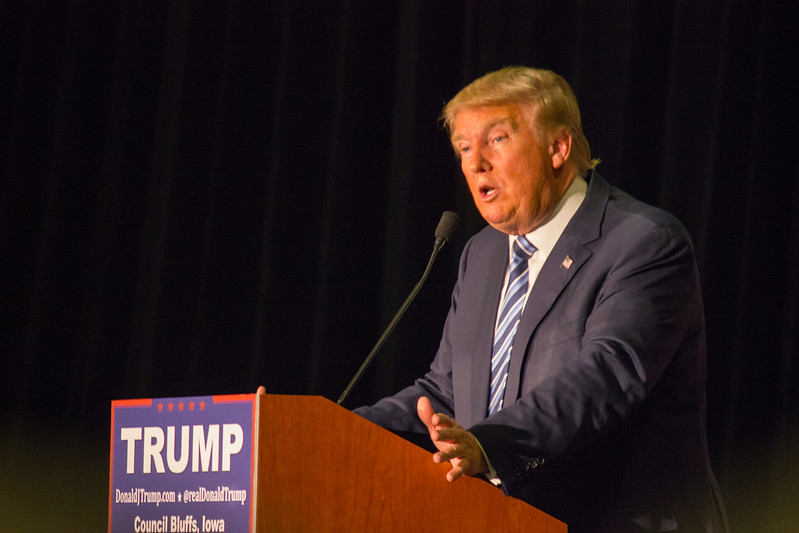A year ago, U.S. President Donald Trump made the disastrous unilateral decision to pull U.S. troops back from Syria’s border with Turkey, paving the way for an aggressive Turkish military operation against America’s Syrian Kurdish-led allies.
This September, the U.S. military redeployed M2A2 Bradley Fighting Vehicles to protect the few hundred U.S. troops remaining in Syria. The deployment was ostensibly to combat remnants of the Islamic State group still in eastern Syria. Its timing, however, was curious since it came less than a month after a Russian military vehicle rammed an American Mine Resistant Ambush Protected (MRAP) vehicle, injuring four U.S. troops inside.
That latter incident aptly underscored how diminished and vulnerable the United States’ military presence in Syria has become since Trump took the fateful decision to drawdown in October 2019. After all, had Trump not taken that haphazard decision those Russian vehicles wouldn’t have even been there.
Turkey had long awaited the opportunity to attack and destroy the Syrian Democratic Forces (SDF), whose main component is the Kurdish People’s Protection Units (YPG). Ankara deems the group a threat, given its origins as the Syrian offshoot of the Kurdistan Workers’ Party (PKK), although the YPG has not used the de-facto autonomy it acquired in northeast Syria as a launchpad to target Turkey. The SDF was, and still is, an instrumental U.S. ally against the Islamic State terror group. It sacrificed at least 11,000 men and women to destroy the Syrian wing of the group’s marauding and tyrannical caliphate.
The U.S. sought to prevent a Turkish attack against the SDF in northeast Syria through the establishment of a buffer zone along the border. Under that arrangement, the SDF would withdraw all its heavy weapons from the border as well as dismantle its defensive positions there. Then the small U.S. troop presence would conduct routine patrols with their Turkish counterparts. The SDF withdrew its weapons in good faith and destroyed their defensive positions and the U.S. and Turkish began patrolling the border.
Then Trump pulled the plug on the whole thing.
In a unilateral move, Trump agreed after a phone call with his Turkish counterpart Recep Tayyip Erdogan to withdraw that small U.S. troop presence from the border, effectively green-lighting a Turkish invasion. Turkey almost immediately pounced on northeast Syria, invading about a third of the border territory around the border town of Tal Abyad. Thousands of mostly Islamist, Syrian proxy militiamen overwhelmed the SDF with supporting Turkish firepower. Hundreds of thousands of civilians were displaced and those violent Turkish proxies looted civilian homes, both Kurdish and Arab, and terrorized the populace. They brutally murdered Hevrin Khalaf, a Kurdish-Syrian politician.
The U.S. withdrawal Trump ordered was very haphazard. On one occasion, U.S. F-15 fighter jets had to bomb an American munitions cache, that had been promptly abandoned during the chaotic pullback, to prevent it from falling in the hands of armed groups. When some of Turkey’s proxy militiamen came close to U.S. troops, AH-64 Apache gunships were dispatched and hovered mere feet off the ground between the American soldiers and the Syrian militiamen.
More generally, the chaos surrounding the Turkish attack ran the grave risk of tens of thousands of Islamic State fighters in SDF captivity, many of whom were in makeshift prisons, escaping and regrouping and terrorizing the region once again. Thankfully, the SDF was able to prevent this from happening.
The power vacuum caused by Trump’s quixotic decision saw Russia and the Syrian regime establish a significant military presence east of the Euphrates River (which hitherto separated mostly SDF-controlled territory from the rest of Syria). It was Russia, not America, that stepped in and brokered a ceasefire that brought the major hostilities to an end. Russia’s military established joint patrols with Turkey in place of the U.S., a classic instance of passing the buck.
Trump had initially wanted to withdraw from Syria completely but then walked back and claimed the U.S. policy was now to protect the oil. He even once bizarrely suggested in a tweet that the Kurds should relocate from their homeland to the oilfields in Syria’s eastern Arab-majority province of Deir ez-Zor. This simplistic fixation on oil predictably drew accusations that the U.S. was looting Syria’s natural resources and also undermined the U.S. military’s justification for being in Syria, fighting the Islamic State.
Some of those U.S. troops ordered to withdraw expressed their disdain for the decision, which amounted to a cynical betrayal of their Kurdish-led allies. The SDF, nevertheless, has remained steadfast allies of the U.S. in Syria ever since and remain essential for combating Islamic State remnants in eastern Syria and guarding the tens-of-thousands of militants they have in captivity.
Looking back, Trump’s decision on October 2019 constitutes one of the most shameful U.S. foreign policy actions in quite some time and its disastrous effects remain with us to the present day.
Image credit: Matt A.J.

